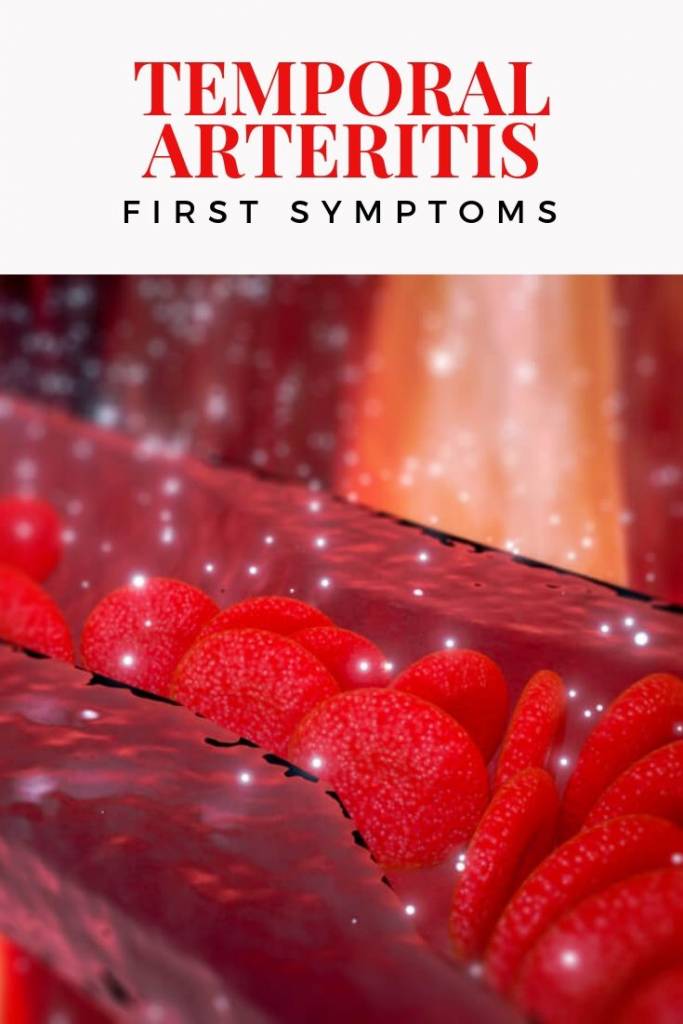The first symptoms of temporal arteritis should be noticed on time. Make sure you recognize them and treat them immediately!
Arteritis is an inflammation of the medium and large vessels. Today we will study it in depth and discover what symptoms it presents.
Arteritis is an inflammation that affects medium and large vessels. Its main consequence is that it causes a narrowing of the arteries, thus preventing blood from flowing easily. Normally, arteritis affects people who are over 50 and their causes are undefined. The hypothesis of genetic predisposition is considered.
Temporal arteritis
This type of arteritis is also known as temporal arteritis. Even, in some occasions, it is called cranial arteritis. Its main feature is that inflammation affects the scalp vessels, neck and arms. Therefore, it will be in these areas of the body where the first symptoms will manifest.
It is important to mention that diagnosing this disorder is not usually easy. The reasons are that the symptoms usually suffered by people who suffer from it can be confused with others that refer to much less serious problems.
The early diagnosis of arteritis can avoid much more dangerous health problems that can significantly affect the health and well-being of the person suffering from it. Some of its possible complications are:
- Damage to other blood vessels in the body.
- Aneurysm development
- Stroke
- Risk of stroke
The first symptoms of arteritis
Now that we know a little more about this disorder, let’s address the symptoms that we should look at. Some of them, as we already mentioned, we can confuse them with other types of milder problems. However, if in doubt, it is better to see a doctor to check that everything is fine.
Pain
The first symptom of temporal arteritis is pain. This will be present in different ways. Sometimes, it may just be a slight nuisance. In others, we may notice a slight sensitivity. However, these may be subtle warnings of the beginning of this disease.
Headache: Because arteritis damages the scalp vessels, pain in the head may occur. Normally, it is strong and persistent, and affects the temples.
Sensitivity in the scalp: we may feel slight discomfort or pain when pressing the area of the scalp. This may make us think that we have it sensitive, however, it may be a symptom of arteritis. We must look at whether it is accompanied by the previous headache.
Jaw pain: when yawning, talking or chewing on some type of food, even if it is soft, you may feel slight pain. If we suffer bruxism we can confuse it with this unconscious habit.
Sometimes, along with these symptoms fever may appear. This may make us suspect that we have a flu principle, which may not be the case. In any case, we must see our doctor.
Fatigue
Fatigue is second of the symptoms of temporal arteritis that can go completely unnoticed. We may associate it with an excess of physical exercise, a period of too much stress or even a change of season. However, we must look at ourselves, in addition to fatigue, we have suffered some weight loss for no apparent reason that can lead to anemia. These two symptoms, that of fatigue and that of weight loss, can occur individually.
Loss of vision
Loss of vision is one of the most significant symptoms of temporal arteritis. This can occur in only one or both eyes. However, before the loss of vision is complete there are some symptoms that will alert us:
- Vision problems as diplopia.
- Paralysis of the eyes.
- Weakness of the eye muscles.
For any symptoms, however slight, the doctor will perform the relevant exams to detect a possible inflammation that may indicate that arteritis is suffered. It is necessary to emphasize the importance of an early diagnosis to end this disorder. If you do not go to the doctor as soon as possible and see how the symptoms evolve, you can risk losing your vision completely or having a stroke.
Arteritis: final comments
In conclusion, arteritis is a pathology that affects the blood vessels of middle-aged people. In addition, it is complex to diagnose, and can be confused with other diseases. Therefore, we recommend you go to the doctor for proper diagnosis and treatment. Finally, we recommend maintaining a healthy diet and exercising regularly to avoid further complications.
Don’t forget to SHARE the first symptoms of temporal arteritis with your friends and family on your social networks!

